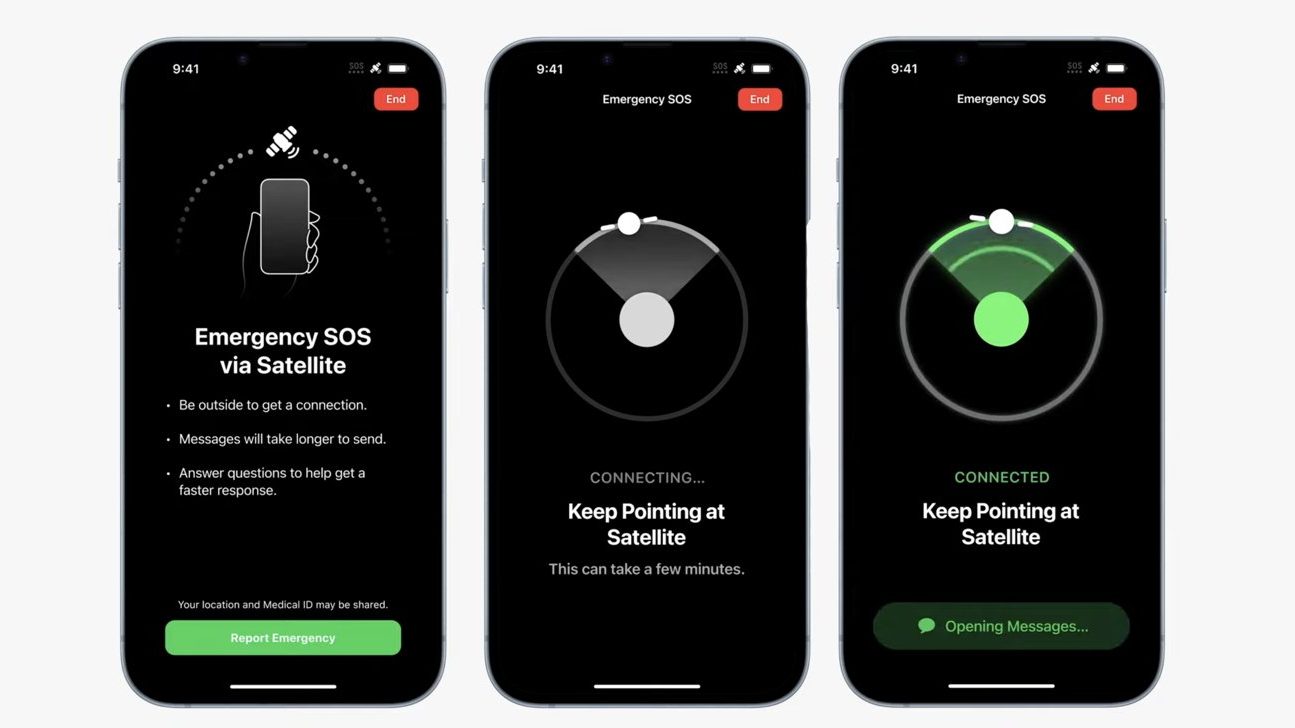
This is what Apple's satellite SOS system looks like in practice
4 min read
28 November 2022
As of November 15, Apple's satellite emergency function on the iPhone 14 and iPhone 14 Pro has officially become available in certain regions. On the occasion, Apple also presented the corresponding demo mode, with which users can prepare themselves to use the function without burdening the authorities with false reports.

The feature uses units from satellite communications company Globalstar to allow people to contact local emergency centers even if there is no cellular or Wi-Fi coverage nearby. So, if someone is in an emergency, the iPhone 14 can be used to initiate communication with one of Globalstar's 24 low-orbit satellites. Nothing of this sort can be found on the Samsung, Vivo, OPPO, or Infinix Price list. The unit then sends the information to one of its ground stations, which forwards the call to a local dispatch center. Here, a third party or Apple-trained specialist will handle our emergency message.
The satellite emergency call can be used when the SOS icon appears in the upper right corner of the screen. This indicates that there is no available Wi-Fi or satellite connection nearby. The feature is powered by a combination of hardware and software components, so it's only available on the iPhone 14 and iPhone 14 Pro models. The function can be activated by dialing 911. If the call doesn't go through, the green circular icon in the lower right corner of the screen will say "Emergency text messaging via satellite."
If we choose this function, we have to expect some delay: it can take at least 15 seconds, and sometimes up to a minute, for the message to go through the satellite.
After that, the more questions we answer about the emergency, the more accurate assistance we can receive. Of course, if someone cannot answer the questions due to an injury, for example, the emergency services will be notified of the incident regardless. The service finds out who needs help, what is the condition of the person concerned, and also asks about the nature of the emergency. And as the last step, we can also ask the system to notify the contact person we specified in advance.
Once the user has submitted all the details of the emergency, including medical details and location, a new conversation opens with the contact center. Meanwhile, the status line at the top of the screen reminds the user that if he wants to maintain communication with the center, the phone must still be pointed in the same direction as before - towards the satellite.
The journalist conducting the test noted that the reporting process is quite lengthy, which is even more difficult if the person has to do it all while being injured.
After fall detection (Fall Detection), and crash detection (Crash Detection), the satellite emergency notification also shows that Apple is concerned about the safety of users. If someone wants to be prepared, anyone can try the latter function in demo mode: this can be achieved by tapping the Emergency SOS function in the Settings menu. The feature is currently available in the United States and Canada, but according to news, the feature will be available in several Western European countries, including the United Kingdom, Ireland, France, and Germany, in December.
In case you have found a mistake in the text, please send a message to the author by selecting the mistake and pressing Ctrl-Enter.

No comments yet